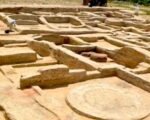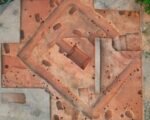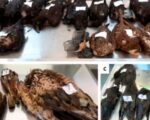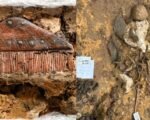Scientists have successfully reconstructed the face of a 9,000-year-old teenager, offering a fascinating look into the Mesolithic period. The teenager, named Avgi, lived around 7,000 B.C. in what is now Greece. Her skull was discovered in the Theopetra cave in 1993, and a team of experts used advanced technology to recreate her appearance. This reconstruction provides valuable insights into the physical characteristics and lifestyle of people from that era, bridging the gap between ancient history and modern science.
The Discovery and Significance of Avgi
The skull of Avgi was unearthed in the Theopetra cave, a site with a rich history of human occupation spanning over 100,000 years. This cave has yielded numerous artifacts, including ancient footprints, ashes, and stone tools, making it a treasure trove for archaeologists. Avgi’s remains were found in 1993, and her name, meaning “dawn” in Greek, reflects the period she lived in—the dawn of civilization. The discovery of her skull has provided a unique opportunity to study the physical attributes and health conditions of people from the Mesolithic era.
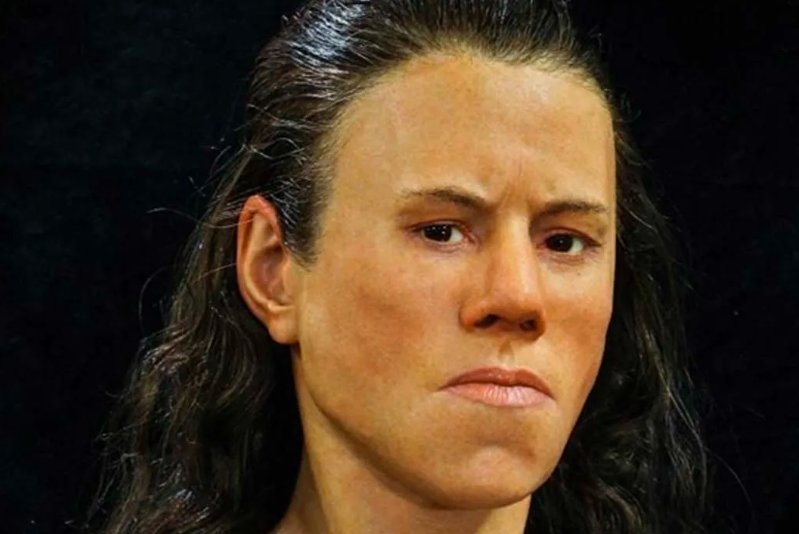
The reconstruction of Avgi’s face was a meticulous process involving a multidisciplinary team of scientists. Orthodontist Manolis Papagrigorakis led the project, collaborating with endocrinologists, orthopedists, neurologists, pathologists, and radiologists. The team used CT scans and 3D printing to create a replica of Avgi’s skull, which served as the foundation for the facial reconstruction. This process allowed researchers to accurately depict her facial features, providing a tangible connection to our ancient ancestors.
The Reconstruction Process
Reconstructing Avgi’s face was a complex and detailed endeavor. The team began by taking a CT scan of her skull, which was too fragile to handle directly. Using the scan, they created a 3D-printed replica with precise measurements. Swedish archaeologist and sculptor Oscar Nilsson then used this replica to build up the facial features, muscle by muscle, based on anatomical knowledge and regional traits of the time. This painstaking process ensured that the reconstruction was as accurate as possible.
Nilsson’s expertise in facial reconstruction brought Avgi’s face to life. He paid close attention to the nuances of each muscle, ensuring that the final result was both realistic and expressive. The team made educated guesses about her hair, skin, and eye color, based on general population traits from the region and period. The result is a lifelike representation of a young woman from 9,000 years ago, complete with a scowling expression that suggests the hardships she may have faced.
The reconstruction of Avgi’s face is not just a scientific achievement; it also provides a window into the past. By studying her features, researchers can gain insights into the health, diet, and lifestyle of Mesolithic people. For instance, Avgi’s protruding jaw suggests that she may have regularly chewed on animal skins to make leather, a common practice at the time. Additionally, signs of anemia and possible scurvy indicate the nutritional challenges faced by people in her community.
Avgi’s Legacy and Impact
The unveiling of Avgi’s reconstructed face at the Acropolis Museum in Athens has captivated audiences and sparked interest in ancient history. This reconstruction allows people to connect with the past in a personal and tangible way, seeing the face of someone who lived thousands of years ago. It also highlights the advancements in technology and interdisciplinary collaboration that make such reconstructions possible.
Avgi’s reconstruction has broader implications for the study of human history. It demonstrates how modern science can bring ancient remains to life, providing a deeper understanding of our ancestors. By examining the physical characteristics and health conditions of individuals like Avgi, researchers can piece together the story of human evolution and adaptation over millennia. This knowledge not only enriches our understanding of the past but also informs our perspective on the present and future.
The project has also inspired further research and reconstructions of ancient faces. Scientists continue to explore new techniques and technologies to improve the accuracy and detail of these reconstructions. Each new discovery adds to the growing body of knowledge about our ancestors, helping to paint a more complete picture of human history. Avgi’s face, with its expressive features and lifelike detail, serves as a powerful reminder of the enduring connection between past and present.
